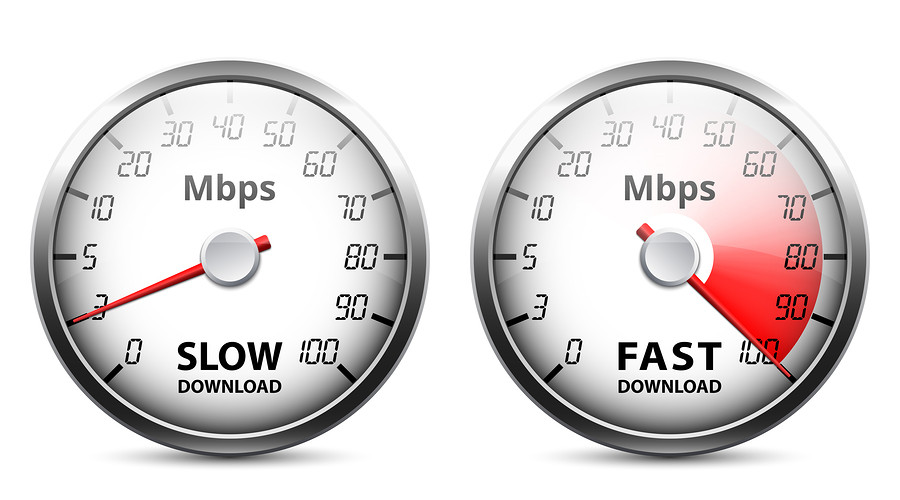Did you know that if your website took longer than 3 seconds to load, you could lose nearly half of your visitors?
Yes, you read that right.
The data from Akamai and several other studies show that the average visitor expects a website to load within 2 seconds, putting the importance of page speed into a whole new light.
Low page speed affects the user experience of the visitor. The longer it takes for him to view all page contents, the more frustrated he becomes. This can eventually push him to switch to a rival’s website and result in missed sales opportunities for the business.
In other words, if your website suffers from poor speed, you are putting your business at some serious risk. This is critical if you are in an industry in which you face a cutthroat competition in getting more conversions.
So how do go about increasing page loading speed? There are many ways you can use. But, before you do, it is vital that you understand what slows down your website.
What causes slow website performance
Unfortunately, there are nearly a dozen reasons that can explain why your website performance is poor from large website elements to dynamic content and bad coding queries. However, an easier way to understand is the server response time and how it is affected by the number of HTTP requests and distance between the datacenter and visiting server.
Put simply, server response time is the amount of time it takes for the browser to fetch all page contents from the server. It consists of two separate times, the waiting time and the receiving time.
HTTP requests
HTTP requests are what the browser requests the server to display all the page contents. These include any type of content, including text, images, video, and more. If a page has a lot of HTTP requests, the longer it will take the browser to process these requests and for the server to load them, resulting in higher waiting and receiving times.
Distance between the datacenter and visitor

The physical distance between the hosting datacenter and the visitor also impacts page loading speed. The longer the distance, the higher will be the server response time.
In other words, if you utilize a data center in Europe for a website that targets customers based in Australia, then your website speed will considerably slower than if you opted for a datacenter in Australia.
9 Tips to increase page load speed
Remove unused plugins
It is possible that you have too many unused plugins that you have installed and activated. If that’s the case, you need to remove them to optimize your website performance. This is because having too many unnecessary plugins can increase the number of HTTP requests your browser requires for processing and bog down your website.
A good way to check which plugins are affecting your page speed performance is to use WP Page Load Stats. This tells you which plugins are draining website resources so that you can remove the ones that can have the best impact on boosting page load speed.
Use a WordPress theme optimized for PageSpeed
If your website is on WordPress, then you need to make use of themes that are best suited for minimizing page load times. Such WordPress themes are rich in static content and contain little dynamic content, giving a seamless browsing experience that optimizes higher conversion rates.
Some of the fastest WordPress themes that I recommend include:
Use browser caching
Caching enabled at the browser level can help speed up your website performance considerably. Whenever a visitor accesses a website, the browser has to process a number of HTTP requests and download all page components including HTML, images, javascript files, and more to load the contents.
So how does it increase page loading times?
It can significantly increase waiting and server response times. Through caching, the browser saves a cached version of the webpage by storing the HTML files as static content. This reduces the number of HTTP requests it has to process every time it accesses the page.
Browsing caching can be enabled in two ways: static HTML and WordPress plugin.
Static HTML
If your website is not on WordPress, you will need to enable browser caching through HTML using the code below:
| 1
2 3 4 5 6 |
# 1 Month for most static assets
<filesMatch “.(css|jpg|jpeg|png|gif|js|ico)$”> Header set Cache-Control “max-age=2592000, public” </filesMatch> |
The cached components of a webpage last a week at a minimum. Through coding, you can increase the time duration for a lot longer.
WordPress plugin
If your website is built on the WordPress CMS, then all you require is a robust caching plugin to reduce page load times, such as Breeze. It is not only easy to install and simple to use, it also is a free plugin that offers premium performance features such as minification, file level cache, and database cleanup.
https://www.cloudways.com/blog/wp-content/uploads/image1-159.png
Minify and combine HTML, JavaScript, and CSS

Minifying web page components is an effective method of speeding up loading times. It basically involves reducing the size of HTML, javascript, and CSS by removing unnecessary formatting, coding, and whitespace.
Minifying and combining files removes redundant lines of code such as extra indentation, spaces, and line breaks.
To minify and combine HTML, javascript, and CSS into a smaller format, you can use a number of WordPress plugins including Breeze, WP Minify, and Better WordPress Minify. However, make sure to run a plenty of tests after minifying web components as it can undermine performance.
Enable GZip Compression
It also helps to reduce the size of files on your webpage to reduce data processing times for the browser and server. GZip Compression enables you to shrink the size of HTML and CSS files by using a file format and application to temporarily replace similar groups of writing codes in the text files.
As most web browsers support GZip, this compression method can speed up your loading times by up to 70% percent according to Yahoo.
You can enable GZip compression using the Breeze cache plugin, as well as other cache plugins such as W3 Total Cache and WP Rocket.
Use a CDN
Files that are hosted on CDNs can lead to blazing fast page speeds, saving you a sizeable amount of bandwidth on your hosting plans. CDNs are geographically dispersed networks of servers around the world so that each visitor can access files from the server closest to his location.
For instance, if you are an Australian business that caters to customers in France. Then your target audience can navigate web pages a lot faster by accessing the server in Europe as opposed to one in Australia. In this way, your website is accessed seamlessly by customers regardless of their location, resulting in better conversion rates and sales.
Opt for a managed cloud hosting provider

Shared and dedicated hosting may be low for your budget, but they certainly miss the mark when it comes to delivering high pagespeeds. With these types of hosting, you don’t have control of local data centers and other performance enhancing features that can optimize your website speed at optimum levels.
Managed cloud hosting solutions, on the other hand, come with the suite of features and upgrades best suited for supercharging your website performance. It offers hosting on local data centers, a robust stack, CDN, in addition to dedicated team of cloud engineers and technicians to manage all technical issues.
When choosing a hosting provider, make sure they offer a local data center, CDN, and optimized stack to reduce loading times.
Disable hotlinking
Hotlinking is when third-parties place the image you use on their websites by hijacking your server and draining your hosting bandwidth.
By disabling hotlinking, you prevent your images from becoming used elsewhere, freeing up enough server resources to process more HTTP requests in a given timeframe.
Optimize images and videos
It is also critical that you optimize all images and videos on your webpage with efficient image compression tools such as WP Compress and WP Smush Pro. Doing so can lighten the burden on your browser and server and make sure the image and videos files you upload are compact enough to load seamlessly.
Endnote
The aforementioned methods are effective ways to increase page speed. This can help enhance the user experience and improve conversion rates for your website.

